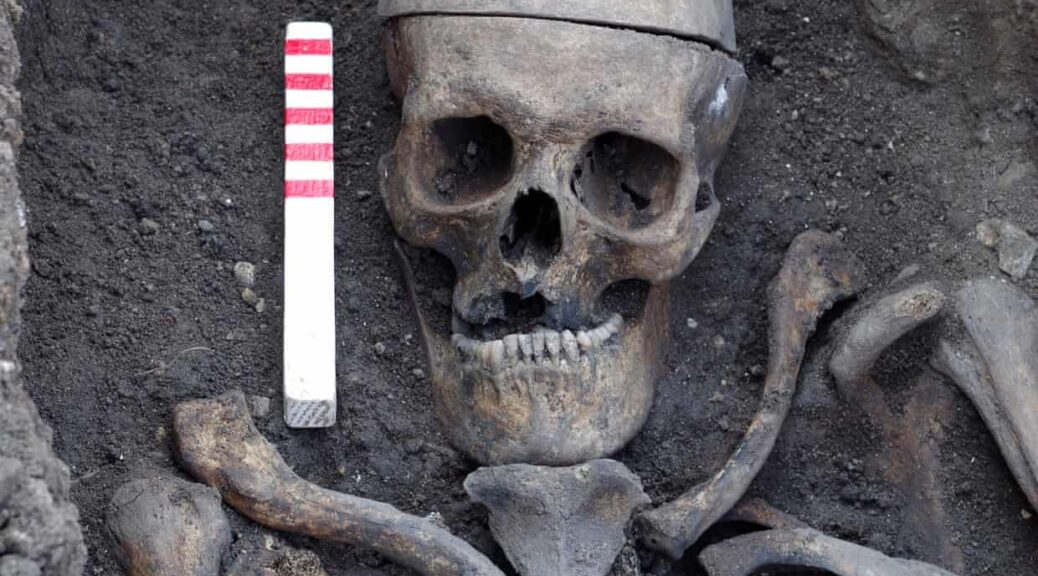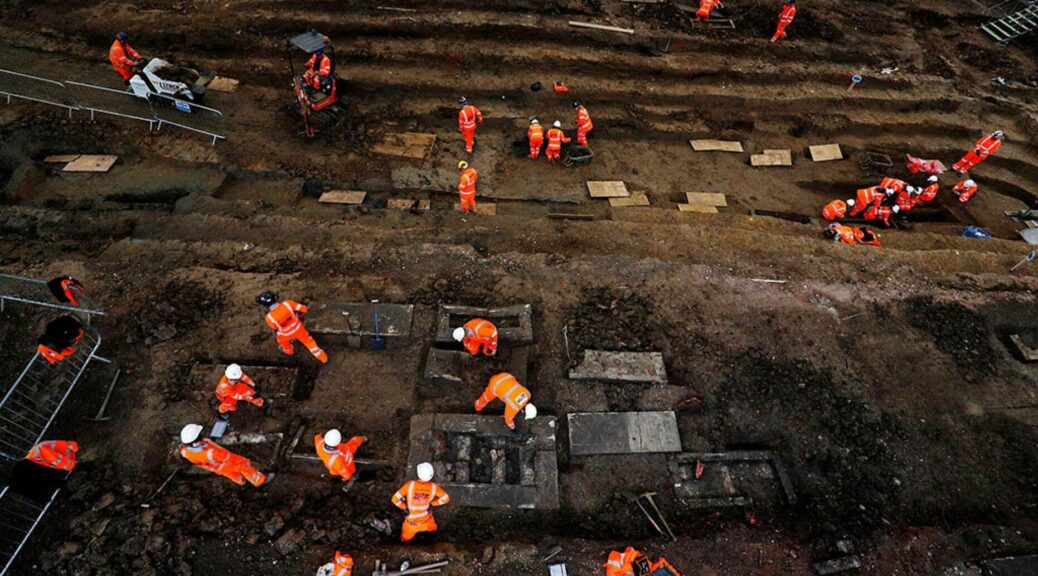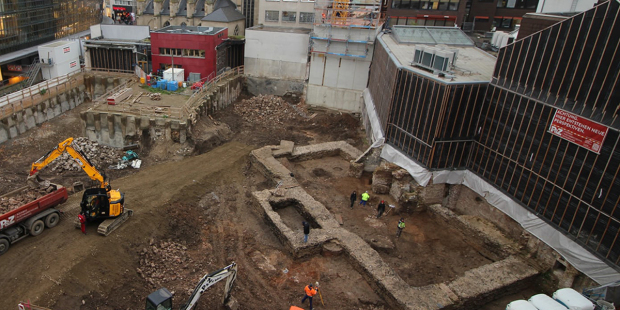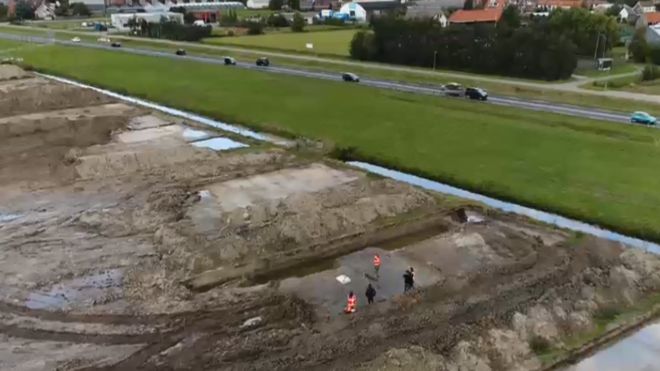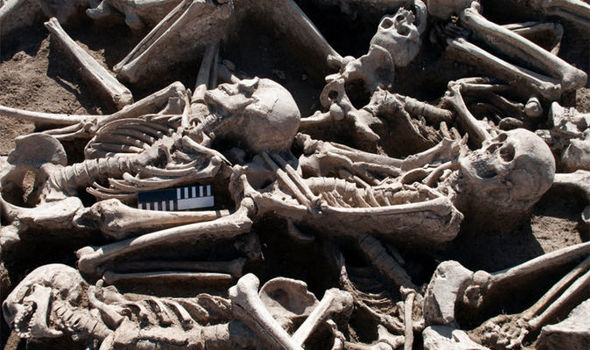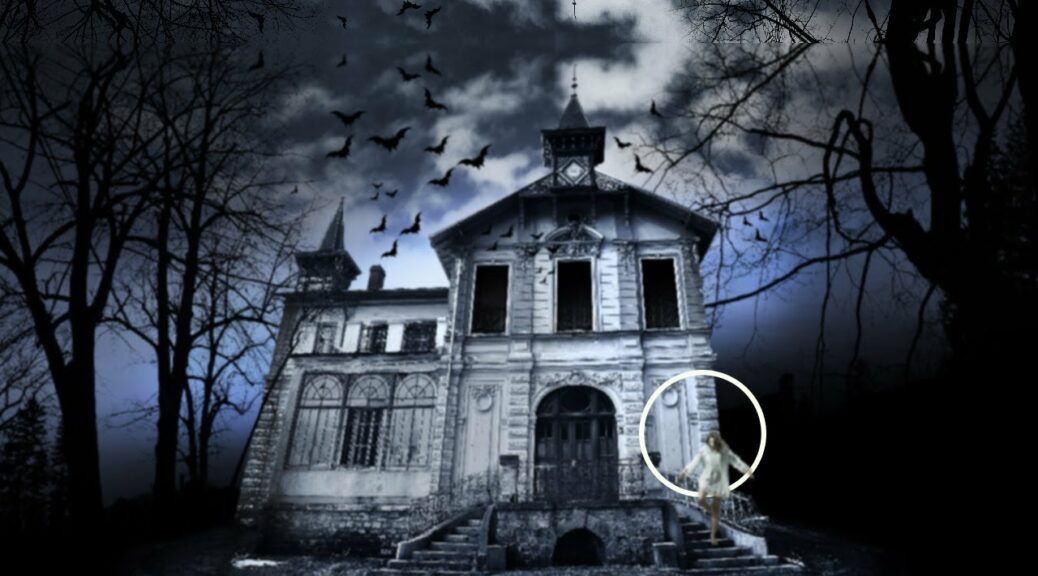Skeletons found in London archaeology dig reveal noxious environs
News reports and social media anxiety may make us feel that life is tough in Britain today but the extraordinary findings of a new archaeological excavation have provided a salutary reminder that, a couple of centuries ago, it was so much worse.
Archeologists working on a burial site at the New Covent Garden market in south-west London in the early 19th century, where about 100 bodies were found, said they contained evidence of arduous working conditions, a harmful environment, endemic diseases, physical deformities, malnutrition, and deadly violence.
Between the 1830s and 1850s, the burials offer an extraordinary glimpse of life in early industrial London. They show the hardness of life that Charles Dickens so acutely described in his classic novels for the industrial poor.

The skeletal remains of those who might have been Dickens’ subjects, who could be deemed among the first “modern” Londoners, have been uncovered by Wessex Archaeology during the excavation of part of a cemetery originally situated on the site of New Covent Garden Market in Nine Elms.

The cemetery was attached to the church of St George the Martyr.
The site had been partially cleared in the 1960s, just before the new market was built, having relocated from its original setting in central London.
Kirsten Egging Dinwiddy, senior osteoarchaeologist at Wessex Archaeology, told the Guardian these were people who had led “a life of drudgery and just-about surviving”. This part of the capital saw a particularly dramatic change from rural market gardens to a heavily industrialized and urbanized environment over just a few years, she said.
“All of a sudden, the world changes and there [are] hideous factories and noxious gases … Gasworks, big railway depots, a lot of construction work.”She added: “The surrounding assortment of noxious, dangerous and labor-intensive industries would have made for very poor working and living conditions, although great numbers of people continued to flock to the area to take advantage of work opportunities.
Most of those trying to survive in and around the area would have been classed as poor or very poor.”The burials reveal high levels of chronic infections, including endemic syphilis.
Three burials in particular offer fascinating insights. One of them reveals a woman who had suffered lifelong congenital syphilis and had led a strenuous working life that involved heavy use of her upper arms and shoulders.
She had a broken nose and a wound to her skull, suggesting she had been murdered. Archaeologists believe that she was attacked, probably from behind, stabbed in the right ear with a thin blade, like a stiletto dagger.
In another burial, a man who was once nearly six feet tall was found. He would have had a distinctive look. A flattened nose and a depression on his left brow suggest “several violent altercations”, the archaeologists say. Bare-knuckle fighting was a popular pastime – he died before the adoption of Queensberry Rules that required boxing gloves – and his knuckles show signs of such fights.
Egging Dinwiddy said that “he would have had a less-than-winning smile” as both front teeth had been lost, probably due to an enormous cyst on the roof of his mouth. He also suffered from syphilis.
About 40% of the burials were of children under the age of 12, reflecting high infant mortality rates of the time. One of the burials has added poignancy because it has a coffin plate revealing the name of Jane Clara Jay, who died on 18 March 1847, just before her second birthday.
She was the daughter of Sarah Jay and her labourer husband, George James Jay, of Nine Elms. Archaeologists found signs of underlying malnutrition, but the exact cause of her death is unclear.
New Covent Garden market is the UK’s largest fresh-produce market. Its 175 businesses employ more than 2,500 people. In partnership with Vinci St Modwen, it is undergoing major redevelopment with new buildings and facilities.
Archaeologists were taken aback by the sheer number of burials beneath what was a car park. They thought that the site of the original cemetery had been completely cleared in the 1960s. Finds from the New Covent Garden project will be shown as part of Digging for Britain on BBC.
